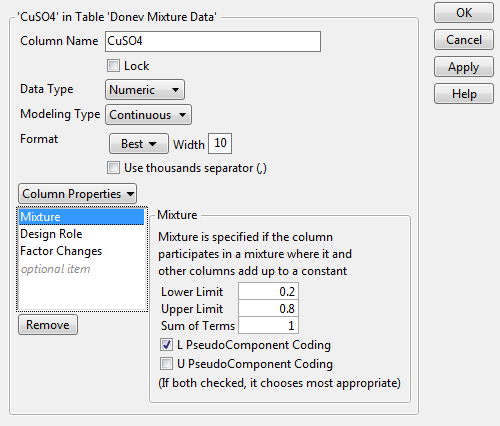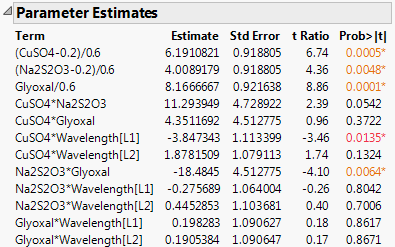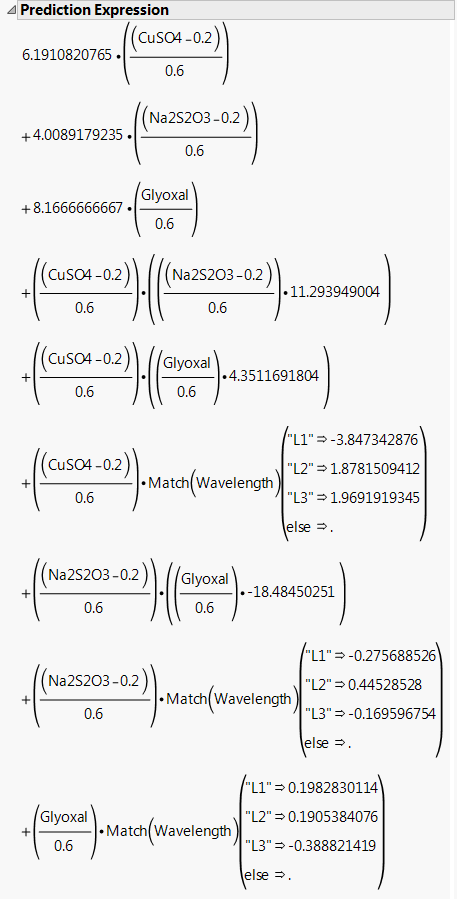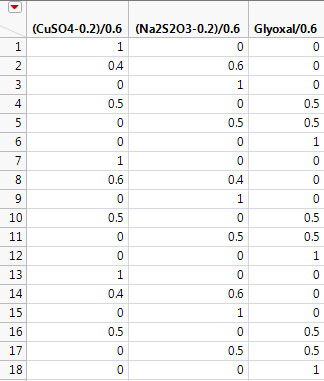The data in the Donev Mixture Data.jmp sample data table, found in the Design Experiment folder, are based on an example from Atkinson and Donev (1992). The design includes three mixture factors and one non-mixture factor. The response and factors are as follows:
|
•
|
The response is the electromagnetic Damping of an acrylonitrile powder.
|
|
•
|
The three mixture ingredients are copper sulphate (CuSO4), sodium thiosulphate (Na2S2O3), and Glyoxal.
|
|
•
|
The non-mixture environmental factor of interest is the Wavelength of light.
|
Though Wavelength is theoretically continuous, the researchers were interested only in predictions at three discrete wavelengths. As a result, Wavelength is treated as a categorical factor with three levels.
For details about using Custom Design to construct a design for this situation, see Mixture Experiments in Examples of Custom Designs.
|
1.
|
|
2.
|
Figure A.20 Mixture Column Property Panel for CuSO4
|
–
|
|
3.
|
Click Cancel.
|
|
4.
|
|
5.
|
Click Cancel.
|
|
6.
|
|
7.
|
Click Run.
|
In the Parameter Estimates report, the mixture factors appear in their pseudo-component coded form. When the mixture factors appear in interactions, they are not denoted in coded form. Nevertheless, the model fitting is based on the pseudo-components. The first three terms in the Parameter Estimates report (Figure A.21), show the coded form for the mixture factors.
Figure A.21 Parameter Estimates Report
|
8.
|
Select Estimates > Show Prediction Expression from the Response Damping red triangle menu.
|
Figure A.22 Prediction Expression for Damping Model
Suppose that you are interested in predictions at Wavelength L2. Suppose also that Na2S2O3 and Glyoxal are set to their low values, 0.2 and 0 respectively, and that CuSO4 is set to its high value, 0.8. In this case, the predicted Damping equals the parameter estimate for CuSO4 (6.191) plus the parameter estimate for CuSO4*Wavelength[L2] (1.878). You can verify this in the Prediction Profiler.
|
9.
|
Select Save Columns > Save Coding Table from the Response Damping red triangle menu.
|



